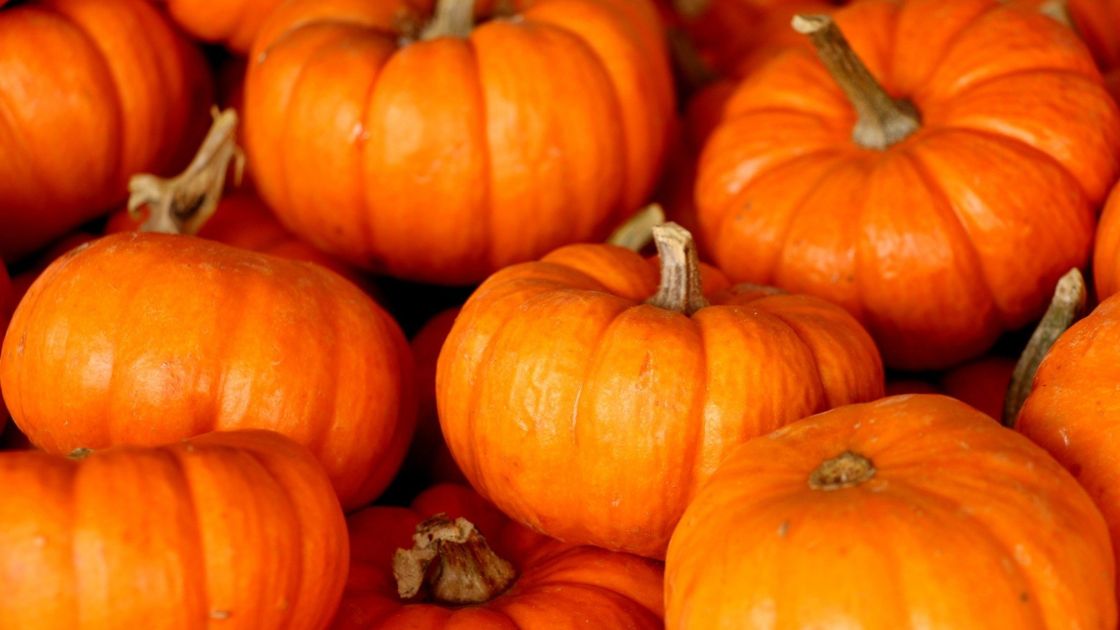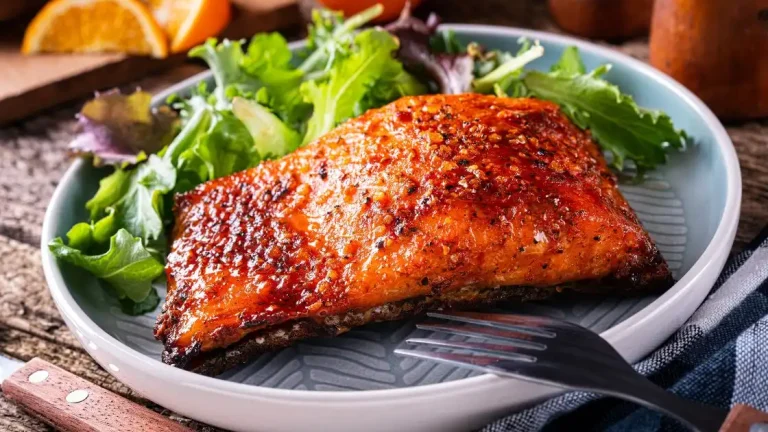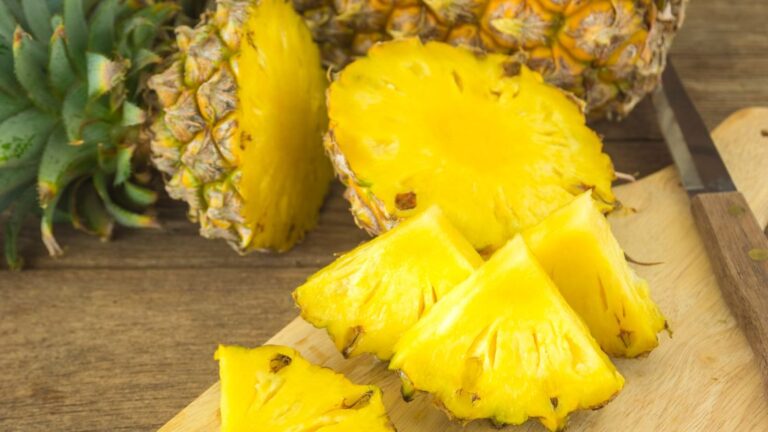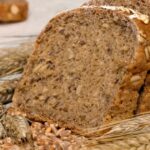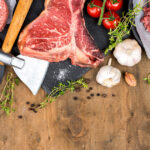Do you think pumpkins are just for decorating on Halloween?
You’re mistaken.
Believe it or not, the pumpkin is a powerful fruit loaded with vitamins and minerals. Its powerful orange color has a specific reason, and it is all its beta-carotene.
To know in detail about pumpkin’s history, nutrients, and benefits, I invite you to continue learning with us. Don’t stop reading.
Physical description
Pumpkin belongs to the same family of plants as melons and cucumbers. It is a variety of winter pumpkins.
Since it has seeds, it is technically a fruit. However, in terms of nutrition, it is more like a vegetable.
Pumpkins are usually round and orange, although variety can affect size, shape, and color. It is attached to its green plant by a stem, which is thick, smooth, and ribbed on the outside.
The fruit is generally hollow inside, except for ivory-colored seeds covered in fibrous skin. Both the pulp and the seeds are edible and loaded with nutrients.
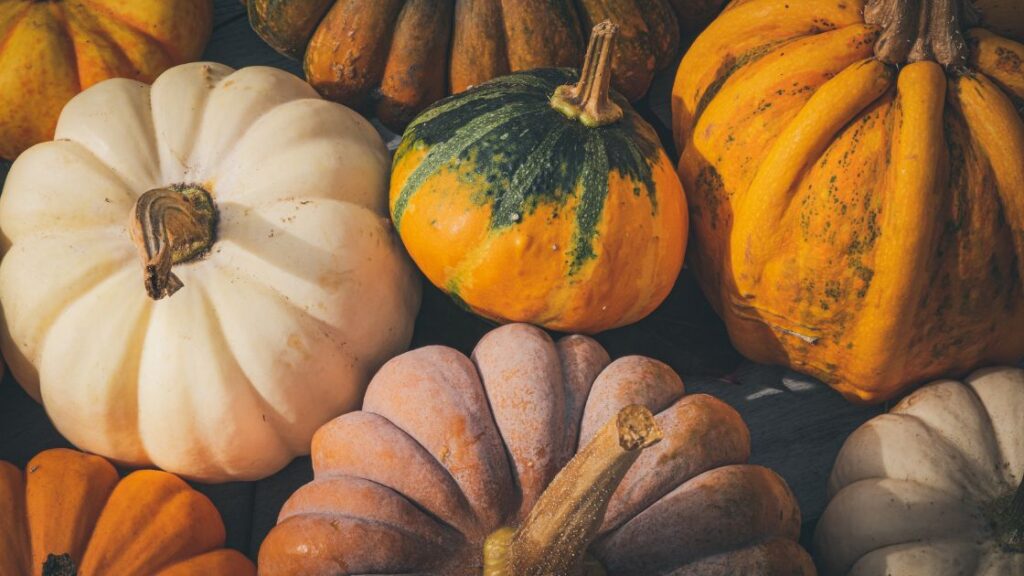
History and production
They are native to North America and are very popular on two very special occasions. They are made into pies for Thanksgiving desserts in the United States and Canada and carved into pumpkins for Halloween.
They are, however, grown everywhere else than Antarctica.
Pumpkins should be grown in soils with good water retention and infiltration rates for water.
In my opinion, pumpkin is a blessing and that is why it is very easy to grow in most regions. In this way, most of the population can enjoy its nutrients and benefits.
Keep reading so you know what they are.
Nutrition Facts about Pumpkin
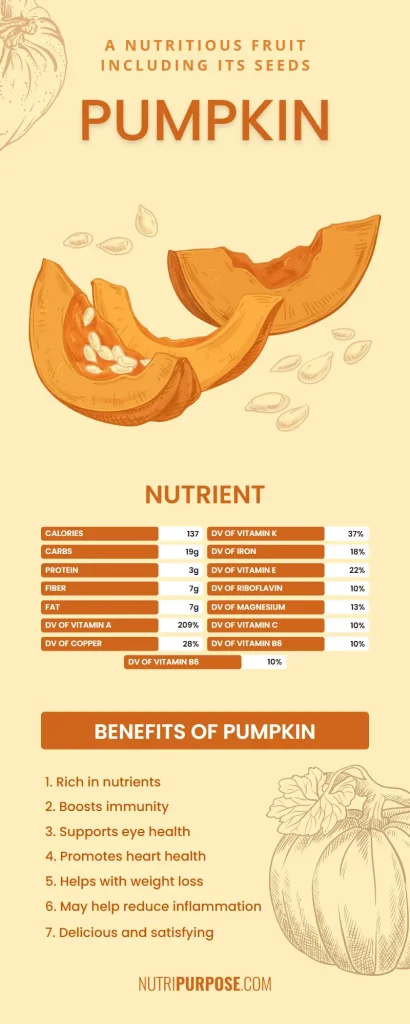
Copy this code and paste on your website:
<a href="https://nutripurpose.com/pumpkin/"><img style="width:100%;" src="https://nutripurpose.com/wp-content/uploads/2023/02/Pumpkin.png"></a><br>Read more <a href="https://nutripurpose.com/pumpkin/">Pumpkin</a>Pumpkin is a remarkably nutrient-dense meal. It means it has many vitamins and minerals and only a few calories per serving.
The following nutrients are found in one cup (245 grams) of pumpkin:
- 137 Calories
- 7 grams of Fat
- 3 grams of Protein
- 7 grams of Fiber
- 19 grams of Carbs
- 209% of the Daily Value (DV) of Vitamin A
- 28% of the DV of Copper
- 37% of the DV of Vitamin K
- 18% of the DV of Iron
- 22% of the DV of Vitamin E
- 10% of the DV of Riboflavin
- 13% of the DV of Magnesium
- 10% of the DV of Vitamin C
- 10% of the DV of Vitamin B6
- 10% of the DV of Potassium
Smaller levels of many other nutrients are also present.
Beta-carotene and alpha-carotene, which are precursors to vitamin A, are what make up the vitamin A in pumpkin. After you take these potent antioxidants, your body can convert them into vitamin A.
Nutrients of Seed Pumpkin
Pumpkin seeds are another popular snack food. The nutrients contained in 1 ounce (15 grams) of whole pumpkin seeds are listed below:
- 86 Calories
- 4 grams of Protein
- 7 grams of Fat
- 2 grams of Carbs
- 1 gram of Fiber
- 21% of the DV of Copper
- 20% of the DV of Magnesium
- Phosphorus: 14% of the DV of Phosphorus
- 10% of the DV of Zinc
Pumpkin health benefits
Metabolic wellness
Consuming foods rich in beta-carotene, such as pumpkin, can help you maintain good metabolic health.
This contributes to the effectiveness with which blood sugar is controlled and the distribution of fat throughout the body.
High-fiber foods like pumpkin can help reduce blood sugar spikes after consuming carbohydrate-rich foods.
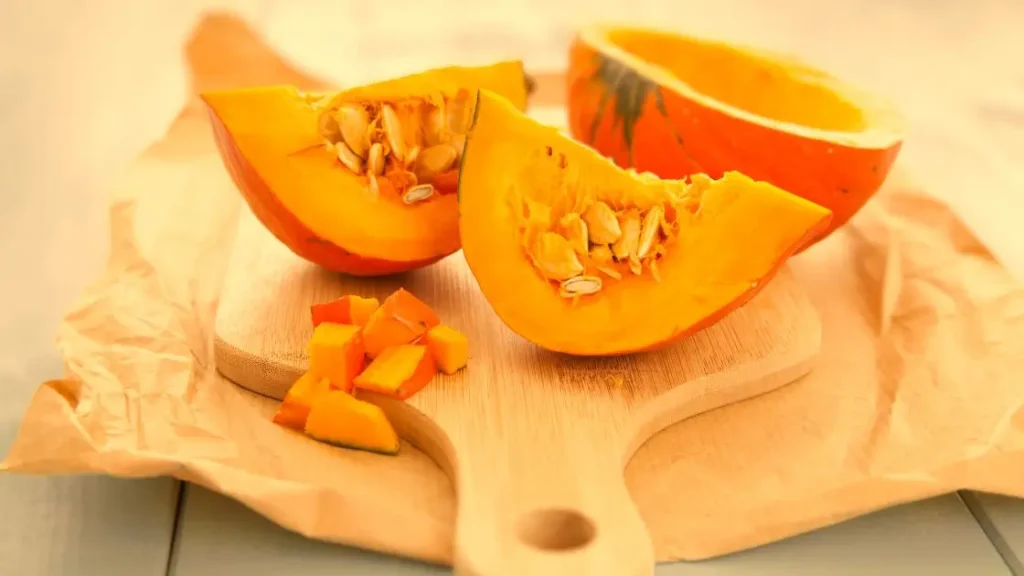
However, the importance of the rest of your overall dietary habits outweighs the benefits of eating pumpkins.
Not everything is in the hands of the pumpkin; you need to follow a healthy and balanced diet.
Cardiac health
Consuming fresh produce supports the health of your heart.
Pumpkin has several minerals that are great for the heart. Potassium in particular could lower high blood pressure levels.
By interacting with cholesterol in foods and inhibiting its absorption, fiber can also help lower blood cholesterol levels.
Other healthy foods that contribute to heart health are watermelon, bosc pear, black olives, and ripe mangoes.
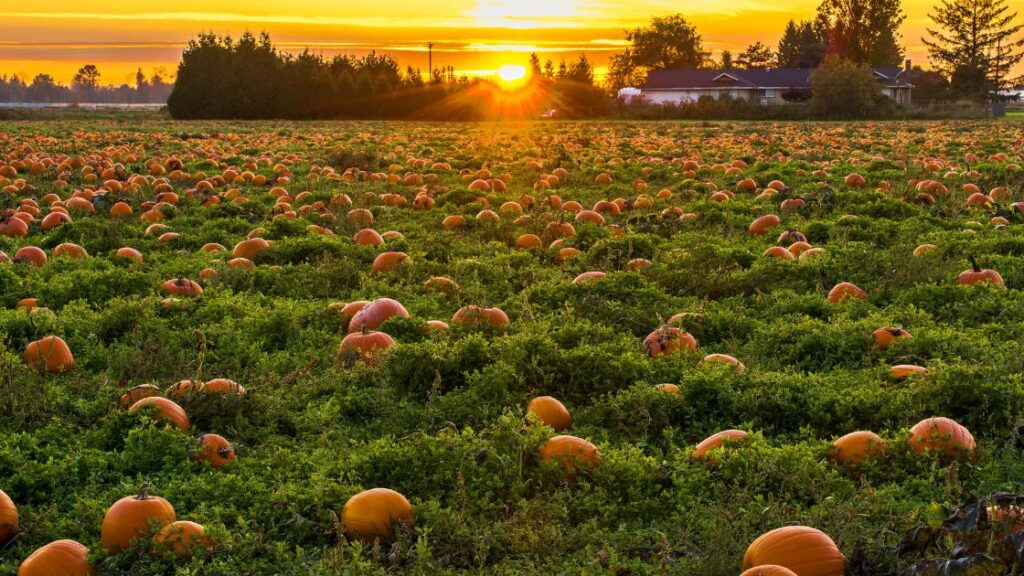
Strengthened immunity
Beta-carotene, primarily converted to vitamin A, is abundant in pumpkins. Our body can fight multiple infections with only vitamin A.
Vitamin A plays a unique role in strengthening the intestinal lining and increasing its resistance to infections.
Pumpkin also strengthens immune cells contributing to immune health. Immune cells react when a virus is detected and attack it to fight it.
Eye wellness
Pumpkin is beneficial for the eyes in different ways.
First, it has a lot of beta-carotene, which helps the retina absorb light and clear vision.
Second, pumpkin’s added vitamins and minerals may help prevent age-related macular degeneration.
Consuming supplements with zinc, vitamin C, vitamin E, and beta-carotene can help people with macular degeneration. Pumpkin is usually related to age but can be delayed with good nutrition.
All these nutrients are found in pumpkin and can be very helpful for our eye health.
Learn now how to prepare pumpkins with these delicious recipes.
Best Pumpkin recipes
Pumpkin hummus
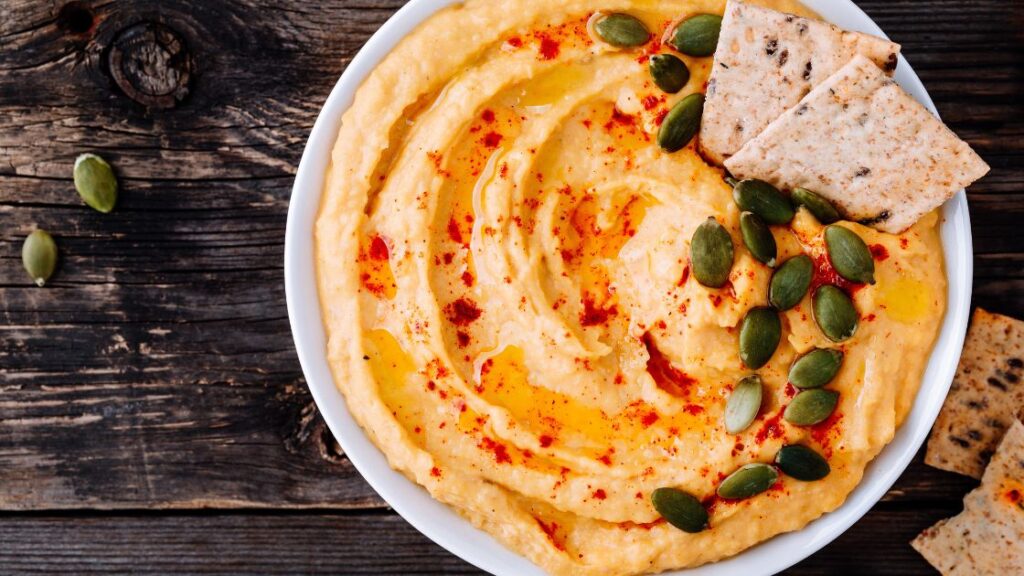
Preparation time: 60 minutes
Servings: 8
Ingredients
- 1 pumpkin (small one, about 500g)
- 2 garlic cloves (peeled)
- 3 tablespoons of olive oil for roasting
- 2 tablespoons of tahini paste
- 1 lemon in juice
- 1 red pepper, deseeded, and sliced
- 400g can chickpeas
- 1 yellow pepper, deseeded, and sliced
- Salt
- Breadsticks and pitta chips, to serve
Procedure:
- Cut the squash to two-thirds the height of the squash.
- Remove pumpkin seeds.
- Scoop out the pulp from the bottom and lid.
- Heat oven to 200 °C, 180 °F.
- Place the pulp of the pumpkin cut into pieces, the garlic, and the oil in a roasting pan.
- After seasoning, bake for 45 minutes or until extremely tender. Let it cool.
- Pour the garlic, roasting pan juices, and pumpkin into a food processor.
- Add the chickpeas, tahini paste, and lemon juice.
- Add a little extra oil if the mixture is too thick after adding salt and mix until you get a paste.
- Refill the squash with hummus and serve with pita bread, bell peppers, and breadsticks.
Note: You can store the hummus overnight in the refrigerator and the next day it will be just as delicious
Muffins with pumpkin pulp
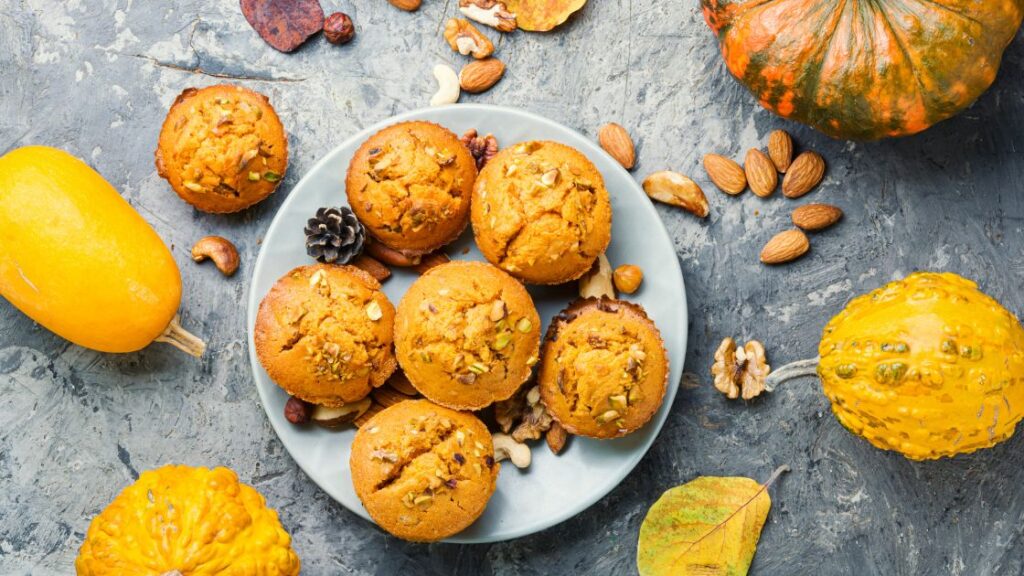
Preparation time: 15 minutes
Servings: 12
Ingredients
- 235g of plain flour
- 1 tablespoon ground cinnamon
- 2 tablespoons of baking powder
- 60g of soft brown sugar
- 100g of sugar
- 2 eggs
- 200g of pumpkin purée
- 140g of slightly salted butter
Procedure:
- Preheat oven to 200°C/180°F/.
- Cinnamon, baking powder, flour, and both sugars should be mixed in a large bowl.
- Before adding the melted butter and eggs to the dry ingredients, the puree and eggs should be mixed.
- Mix for 3 minutes or until all ingredients are combined using a hand or electric mixer.
- Put the mix in a 12-hole muffin pan lined with muffin cups.
- Bake for 15 minutes, or until they have risen and are golden brown.
- Lift it onto a wire rack to allow it to cool completely.
- If stored in an airtight container, it will last three days.
Note: You can reserve the muffins at room temperature and they will keep fresh and fluffy for up to 3 days.
If you want to have a healthy diet and enjoy delicious meals at the same time, use pumpkin as your best option. That’s why Jim Davis says:
“Vegetables are a must on a diet. I suggest carrot cake, zucchini bread, and pumpkin pie.”
Pumpkin: Vitamin A within easy reach
When you eat pumpkin from now on, the first thing you will think of is vitamin A. The benefits of vitamin A are wonderful and pumpkin has a lot to offer in that regard. You already know that the seeds should not be discarded, they are as nutritious as their pulp. So eat pumpkins, even their seeds.

I am a professional health and nutrition writer with extensive experience in the industry. My passion for sharing valuable insights on nutrition and wellness stems from over 15 years of personal training and maintaining a healthy lifestyle. My commitment to continuously educate myself on the latest trends and research in the field allows me to deliver high-quality content that is informative and engaging. My mission is to empower individuals to make informed decisions about their health and well-being through my writing.
